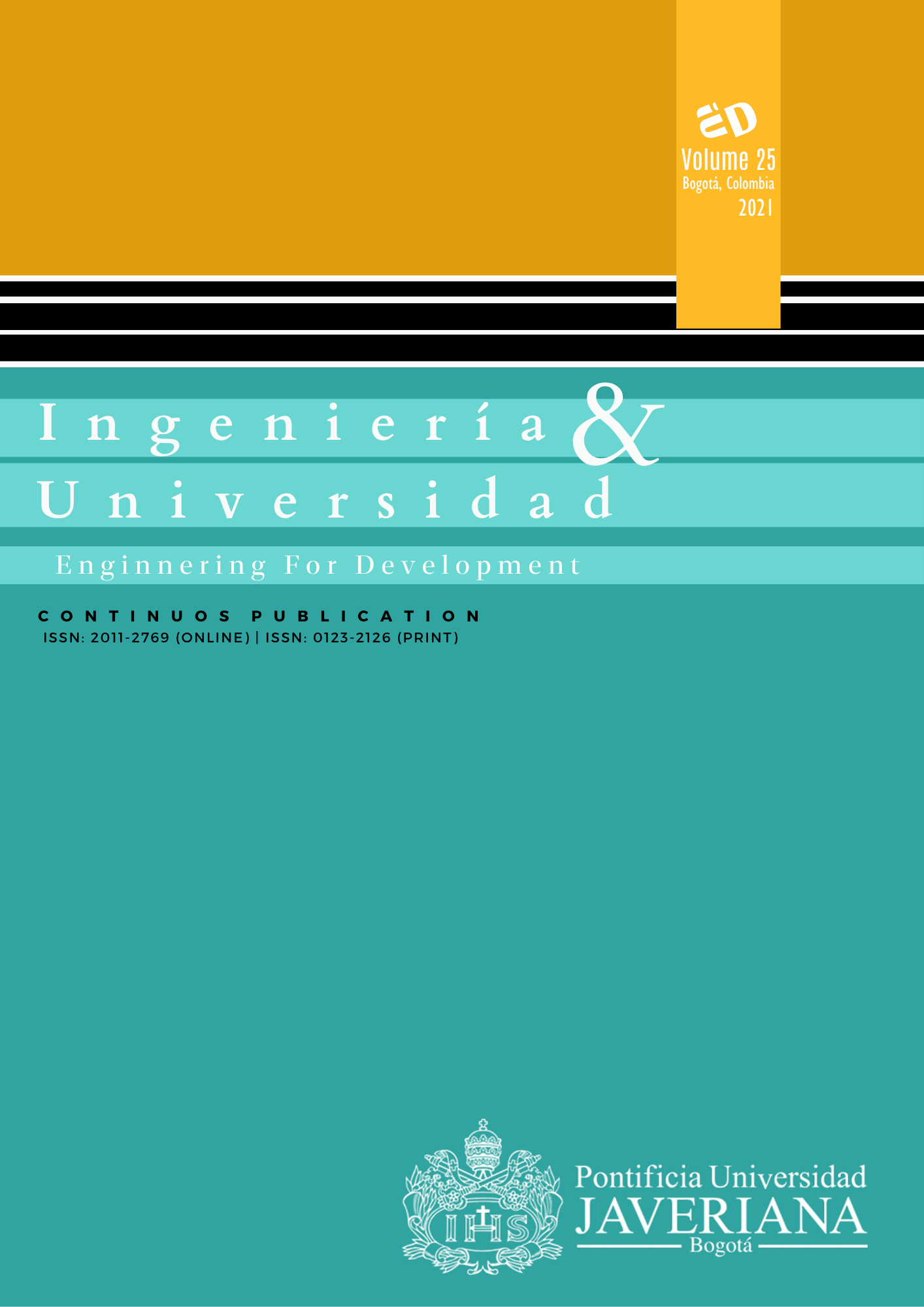Abstract
Objective: This research aimed to assay the dehydration and stabilization of surplus biosolids from a wastewater activated sludge treatment plant, with sludge-treatment wetlands, at the Iguazú National Park (Misiones, Argentina). Materials and Methods: A 12-cell sludge-treatment reed beds (STRB) system was built and operated for four years. Afterwards, the accumulated sediments were analyzed for total solids (TS) concentration, volatile solids (VS) reduction, specific oxygen-uptake rate (SOUR), and heavy metals and pathogens concentrations. Results and Discussion: TS concentration increased from 0.55 % to 14.3 %, VS were reduced by 33.3 %, and SOUR lowered to 1.09 mg O2gTS-1 h-1. These figures and the final concentrations of heavy metals and pathogenic microorganisms (102 MPN E.coli.gTS-1) indicated a degree of stabilization and sanitation that allowed classifying these biosolids as Class A, according to the Argentine guidelines, National Resolution 410/18, and enabled their reuse for soil amendment in landscapes and other agronomic purposes. Conclusion: The technology tested showed good results applied under a tropical climate, with annual temperatures between 17 and 27 °C, rainfall of 1870 mm y-1, and planted with autochthonous vegetation. Furthermore, it allowed the reuse of 221 t (144 m3) of a harmless product in an environmentally sustainable way.
S. Nielsen and E. W. Bruun, “Sludge quality after 10-20 years of treatment in reed bed systems,” Environ. Sci. Pollut. Res., vol. 22, pp. 12885-12891, 2015. Available: https://doi.org/10.1007/s11356-014-3815-6
I. Kengne and E. Tilley, “Drying beds with plants,” in Fecal Sludge Management. A Systemic Approach for its Implementation and Operation, L. Strande, M. Ronteltap, and D. Brdjanovic, Eds. First Ed. London: IWA, 2014.
E. Uggetti, I. Ferrer, E. Llorens, and J. Garcia, “Sludge treatment wetlands: A review on the state of the art,” R. Bioresource Technol., vol. 101, no. 9, pp. 2905-2912, 2010. Available: https://doi.org/10.1016/j.biortech.2009.11.102
Ministerio de Ambiente y Desarrollo Sustentable, Rep. Argentina. (2018, Jul. 12). Resolución 410/18. Manejo sustentable de barros y biosólidos generados en plantas depuradoras de efluentes líquidos cloacales y mixtos cloacales-industriales. Available: http://argentinambiental.com/legislacion/nacional/resolucion-41018-manejo-sustentable-barros-biosolidos-generados-plantas-depuradoras-efluentes-liquidos-cloacales-mixtos-cloacales-industriales/
Metcalf & Eddy. Ingeniería sanitaria. Tratamiento, evacuación y reutilización de aguas residuales. 3rd ed. Colombia: Quinto Centenario, 1994.
American Water Works Association, American Public Health Association, and Water Environment Federation, Standard Methods for the Examination of Water and Wastewater. 20th ed. Washington, D. C.: APHA-AWWA-WEF, 1998.
United States Environmental Protection Agency, The SW-846 Compendium. Available: https://www.epa.gov/hw-sw846/sw-846-compendium
Water quality: Detection and enumeration of Escherichia coli and coliform bacteria. Part 3: Miniaturized method (Most Probable Number) for the detection and enumeration of E. coli in surface and waste water, ISO 9308-3, 1998. Available: https://www.iso.org/standard/20878.html
M. Shurtleff and C. Averre, “Diagnosing Plant Diseases Caused by Nematodes,” J. Agric. S., vol. 138, no, 03, pp. 345-348, 2000.
J. A. di Rienzo, F. Casanoves, M. G. Balzarini, L. Gonzalez, M. Tablada, and C. W. Robledo. (2020). InfoStat. [Online]. Available: http://www.infostat.com.ar
S. Nielsen, “Sludge reed bed facilities: Operation and problems,” Water S. Technol., vol. 51, no. 9, pp., 99-107, 2005. Available: https://doi.org/10.2166/wst.2005.0297
E. Uggetti, I. Ferrer, S. Nielsen, C. Arias, H. Brix and J. García, “Characteristics of biosolids from sludge treatment wetlands for agricultural reuse,” Ecol. Eng., vol. 40, pp. 210-216, 2012. Available: https://doi.org/10.1016/j.ecoleng.2011.12.030
S. Nielsen, “Helsinge sludge reed bed system: Reduction of pathogenic microorganisms,” Water S. Techn., vol. 56, no 3, pp. 175-182, 2007. Available: https://doi.org/10.2166/wst.2007.491
40 CFR 503.30. Code of Federal Regulations, title 40, part 503, subpart D. Revised July, 1998. US GPO. Available: https://www.govinfo.gov/app/details/CFR-2010-title40-vol29/CFR-2010-title40-vol29-sec503-30

This work is licensed under a Creative Commons Attribution 4.0 International License.
Copyright (c) 2021 Alejandro Jorge Mariñelarena, PhD, Hugo di Giordi, BSc, Jorge Donadelli



